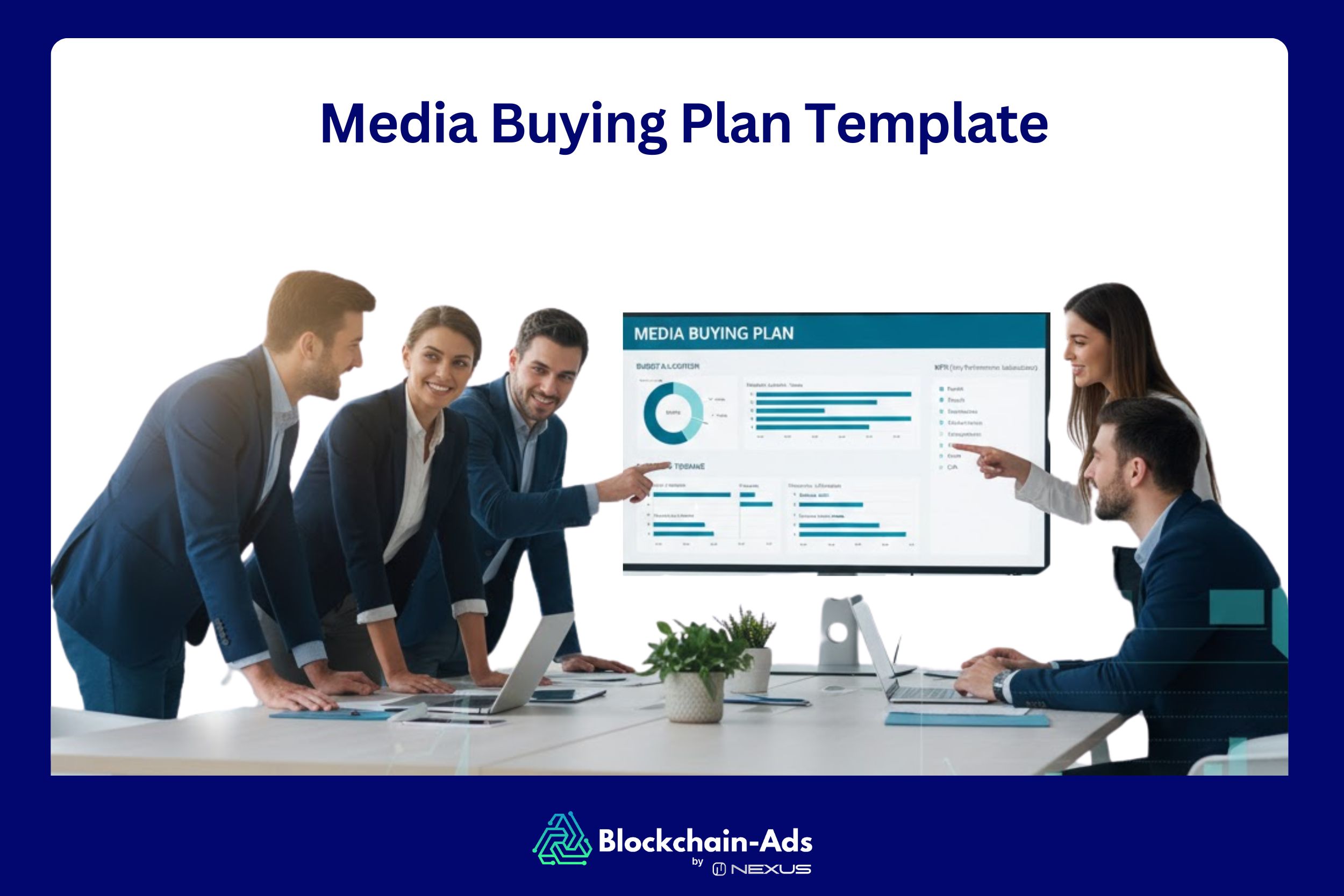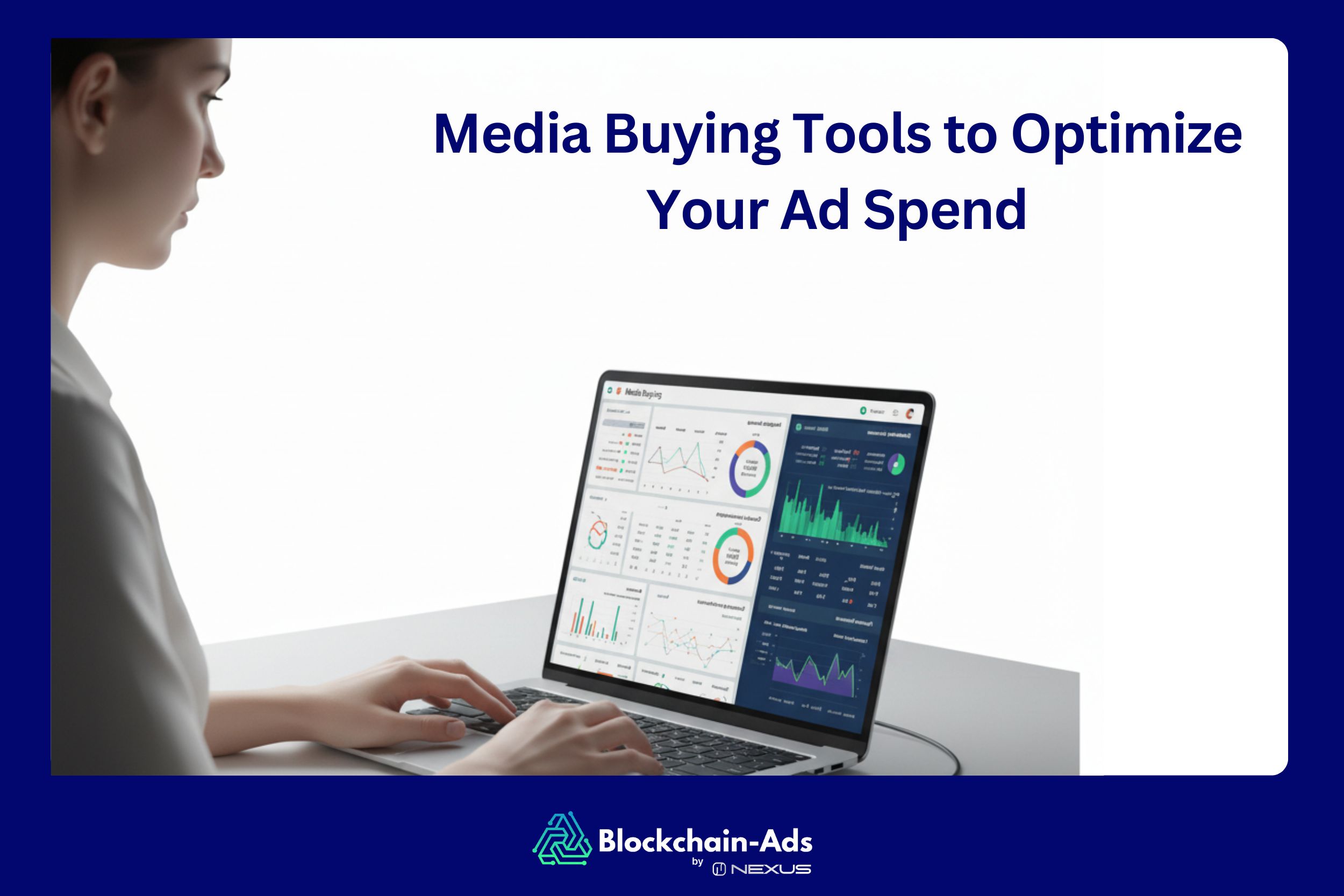Media Buying 101: What It Is and the Process
Heading
- Cointelegraph Formula offers various ad formats to 8 million monthly readers across 190+ countries, leveraging its trusted name in crypto.
Media buying is a key component that determines how successful an advertising campaign will be. When implemented well, it helps ads reach the target audience by controlling where, when, and how they appear.
In this guide, we'll break down the fundamentals of media buying and explain the media buying process. We'll also highlight its importance and detail the key factors to consider before buying media.
What is Media Buying?
Media buying is a step in an advertising campaign that involves purchasing ad space on advertising platforms. The goal is to promote a brand by pushing ads relevant to a particular audience at the right time. Media buying is possible on traditional and digital ad platforms. It can include print media, TV, radio, websites, social media, or even apps.
Behind the media buying process, there are people known as media buyers. These professionals are responsible for improving brand visibility through planning and campaign execution. Other responsibilities include negotiating rates with ad publishers, securing placements, and managing budgets.
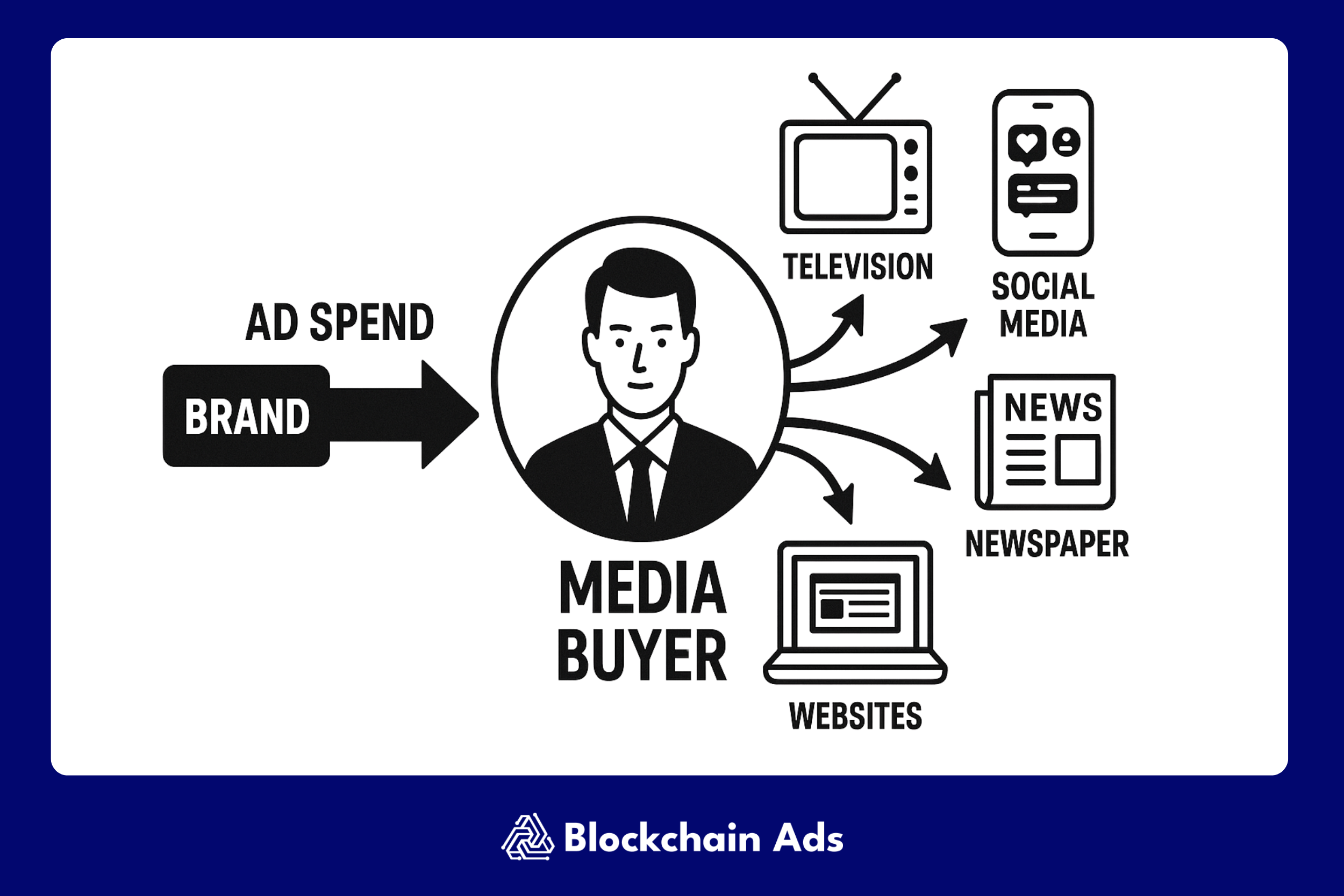
Why Companies Buy Media
Companies buy media because it helps to optimize for impact and cost efficiency. It’s not enough to have compelling ad copy laced with attractive visuals. The advertisements must be placed where they'll be seen by the audience at a time when they'll be most impactful.
There are no restrictions on the type of media outlets needed when buying media. Experienced media buyers know this and sometimes combine digital and traditional media for the best results. Regardless, the campaign objectives determine the types of ads needed and the best outlets to place them.
Some common reasons or objectives behind media buying by companies are:
- Increasing brand awareness among new and existing customers.
- Attracting and converting new leads.
- Increasing engagement among existing users.
- Driving traffic to a website.
- Reinforcing the position of the brand.
Difference Between Media Buying and Media Planning
Media buying and media planning are sometimes used interchangeably by advertisers. While both contribute to the success of an ad campaign, they are very different aspects of the process.
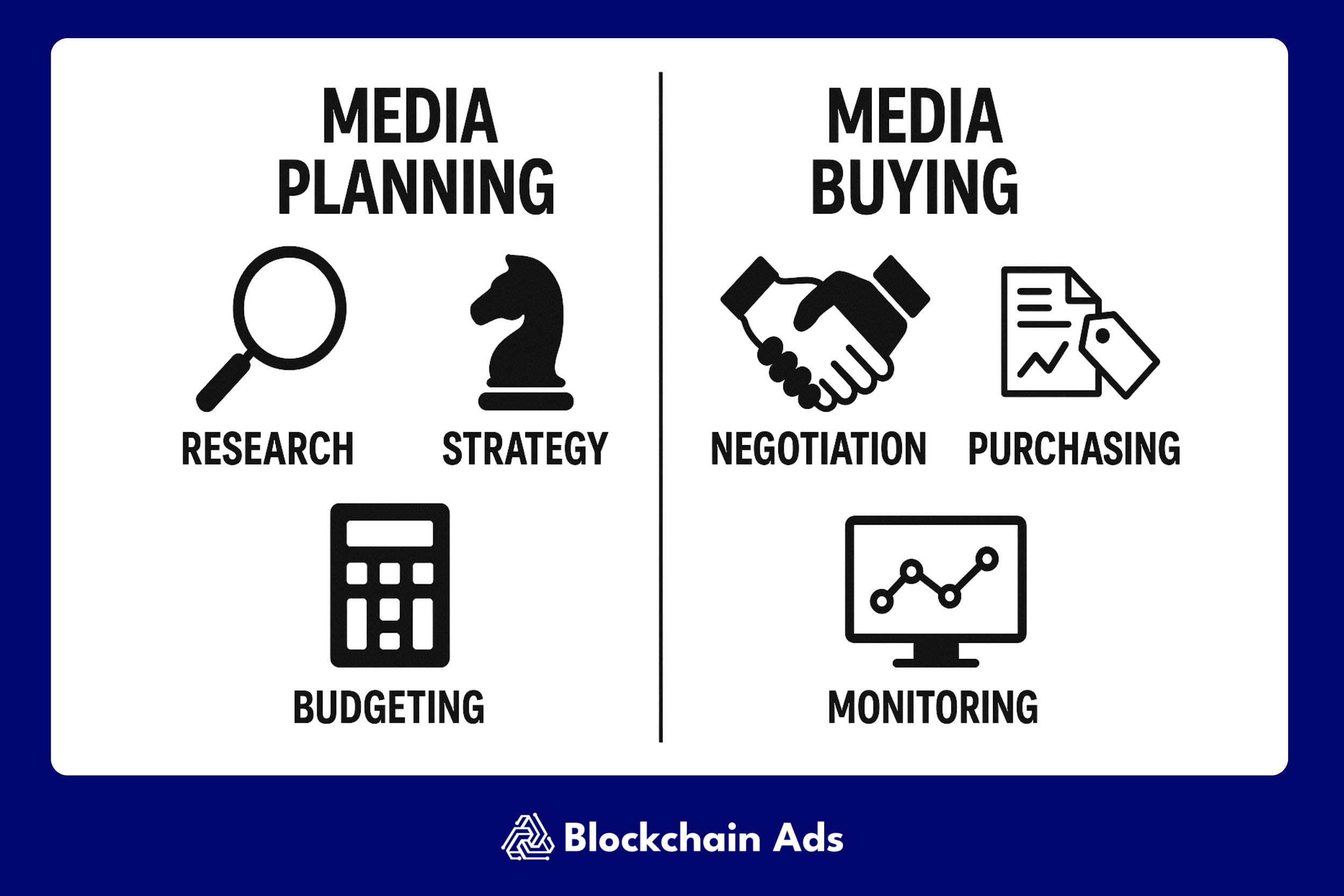
The media planning phase is where the blueprint for the campaign is crafted. It involves researching the target audience, developing objectives and KPIs, estimating budgets, and determining the most effective media type.
In the media buying phase, everything that was put together during planning is set in motion. This is where actionable strategies are implemented by the media buyers. The team engages in deal negotiations, purchasing media space, and delivering on the campaign goals effectively.
In some small and medium-sized businesses, media planning and buying are easily managed by the same team or person.
Types of Media Buying
There are various categories of media buying, each with its advantages and best-use cases. Here are brief descriptions of the available types:
Programmatic Media Buying
In programmatic media buying, the process is automated through the use of algorithms or AI. It involves purchasing ad inventories via real-time bidding (RTB), which could lower the cost of placing ads.
Programmatic media buying also makes it possible to participate in multiple exchanges at once through demand side platforms (DSPs). Advertisers who want to reduce ad spending can use it to target audiences more precisely.
Direct Media Buying
Direct media buying involves purchasing ad space directly from publishers. The negotiation process is done without automations so advertisers can have more control over ad placements.
Direct media buys are still used in traditional media channels like TV and print. It works best for advertisers who want to gain visibility and build trust within a small community.
Network Buying
Network buying relies on ad networks to act as intermediaries between advertisers and publishers. The networks collate and pool ad inventories from different websites, giving marketers more choices at varying prices.
Network buying is less customizable than direct media buying, which means there's less control over ad placements. However, this format is cost-effective and allows for a more extended campaign.
The Media Buying Process
The media buying process isn't one size fits all. Still, there's a structured process you can follow to keep things organized and to maximize reach and ROI.
Each step in the process is adaptable to any type of media buying and can be efficiently executed to great success. Here's how to go about it:
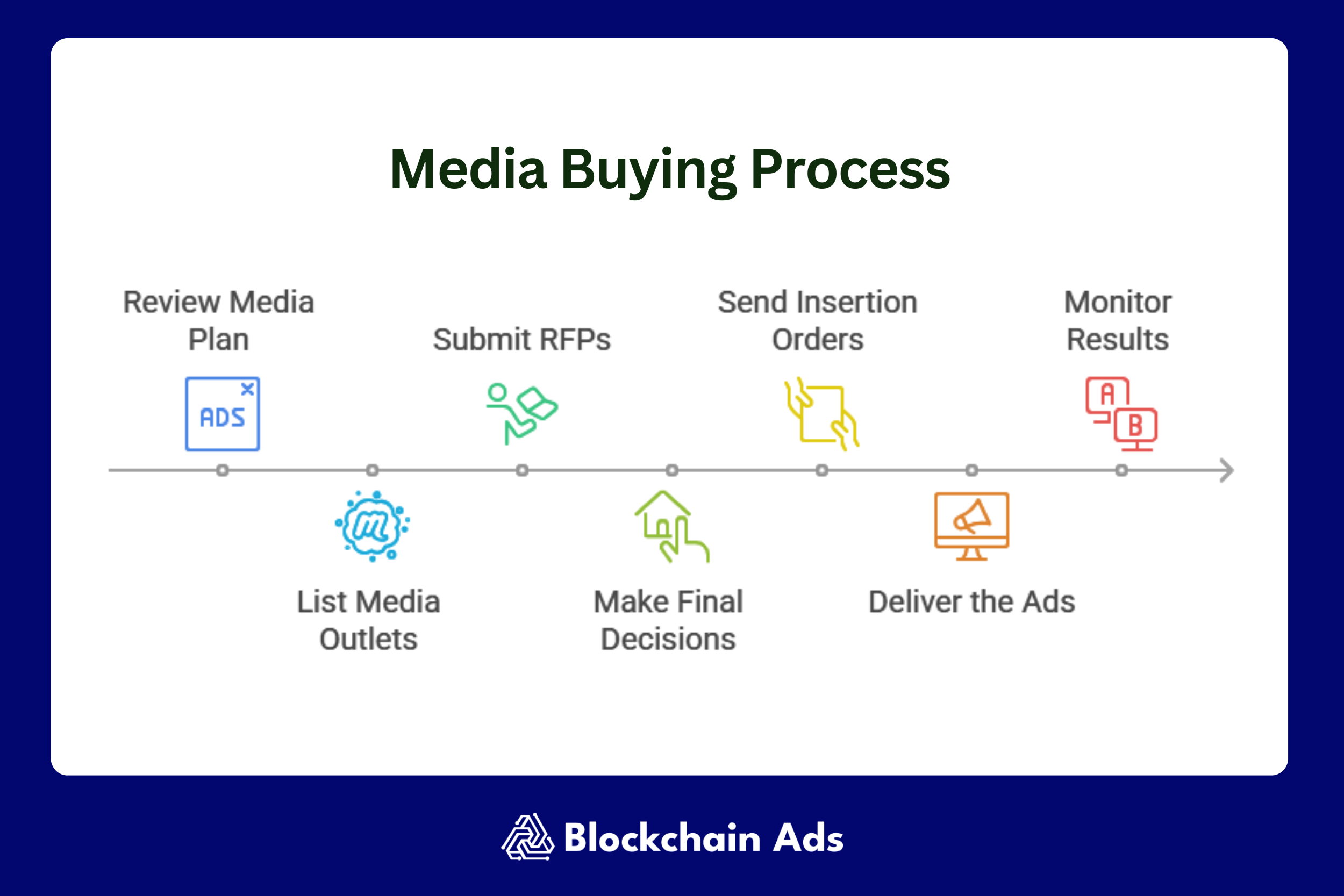
1. Review media plan.
The media buying process begins with a proper review of the blueprint created by the media planner. In this phase, the media buyer determines the best ads to run and where to run them. This is also where budget allocations are carried out to ensure that campaign objectives match the brand's goals.
2. List media outlets.
The next step involves creating a shortlist of the potential media outlets or platforms you want to run your ads on. Here, the buyer evaluates digital and traditional media options to determine which is best suited for the campaign.
If a combination of media types is preferred, DSPs can be added to the list to access a vast inventory of websites and apps.
3. Submit RFPs.
Request for Proposals (RFPs) typically include details of an ad campaign. This is the phase where media buyers send out RFPs to shortlisted media outlets that are being considered.
RFPs should include information about the campaign budget, timelines, and target audience. The goal is for outlets to respond with proposals, which buyers can then choose from. When using a DSP, this traditional RFP process is often replaced by setting up campaign parameters directly within the platform for automated bidding.
4. Make final decisions.
Once the media buyer receives RFP responses from potential media outlets, an evaluation is done to compare each proposal. This is where factors like audience reach, cost efficiency, placement time slots, and vendor reputation come into play.
The media buyer then chooses the proposal that aligns with campaign goals while delivering the best value. With a DSP, these decisions are made in real-time through automated auctions based on the buyer's targeting and budget settings.
5. Send insertion orders.
After making a final decision, the media buyer submits insertion orders (IO) to all selected media outlets. IOs are formal contracts between advertisers and publishers that contain the specifics of the campaign. This legal agreement will require signatures from both sides to ensure that it's binding.
6. Deliver the ads.
Now that the agreements are in place, the ads are sent to the media outlets within the specified deadline. Behind the scenes, a creative team should have developed the ads or be working on them to meet deadlines. The job of the buyer in this phase is to ensure that the ad specifications align with each selected outlet.
7. Monitor results.
After ad campaigns go live on all selected outlets, media buyers must monitor how they're performing. This includes tracking audience reach, impressions, clicks, and conversions against KPIs crafted by the media planner. DSPs provide real-time dashboards that make this monitoring process more efficient. Campaigns that are underperforming can then be optimized in real time, or “makegood” negotiations can be arranged with outlets.
Four Factors to Consider When Buying Media
Becoming a successful media buyer requires implementing key strategies to maximize results. Here are four factors to consider before or during the media buying process:
1. Protect your brand
The reputation of your brand is critical when buying ad space for campaigns. It's important to work with trusted media buyers that have good relationships with media outlets. This is to ensure that the ads are placed successfully and do not appear alongside offensive content.
The best demand side platform or traditional partners to work with are those that prioritize your brand's safety and trust.
2. Optimize your media buying
One of the benefits of programmatic media buying is that the automated system optimizes the process for you. With direct media buying, you can optimize by negotiating better rates and comparing CPA, CPM, and CPC across outlets. The purpose of optimization is to guarantee maximum performance with the minimum amount of ad spending possible.
3. Aim for cohesion
There should be consistency in messaging across all media outlets running your ads. The creative team should work in sync with the campaign goals for each medium to avoid conflicting messages. When done properly, a cohesive media buying strategy will give you the best return on your advertising investment.
4. Prioritize measurement
The best way to optimize your live ad campaigns is to have a measuring system in place. Without measurement, you won't know which campaigns or creatives are getting the best results at the lowest cost. Gauging metrics like reach, engagement, and conversions will allow you to fine-tune campaigns for better impact.
How to Choose a DSP
Partnering with an ideal demand-side platform (DSP) when buying media contributes to the success of ad campaigns. Here are four elements to consider when choosing DSPs:
Analyze the inventory
The estimated reach of an ad inventory is not the only factor to consider when choosing it. Also review its quality, reputation, and if it's comprehensive enough to meet the campaign goals. The best DSPs will offer buyers access to premium publishers and have a choice of multiple ad formats.
Understand the approach to brand safety
Before choosing DSPs, identify and evaluate their standards and policies towards brand safety. A reputable DSP should have tools and resources that prevent ads from appearing alongside offensive content. They'll also ensure that your advertisements show up only in safe environments.
Confirm customer support details
Having an easily accessible and reliable customer service team can make or mar your ad campaigns. Go for DSPs that offer real-time technical support that consists of dedicated account managers you can reach 24/7. With the right service options, campaigns can be kept running smoothly with little or no downtime.
Evaluate the audiences and how you can reach them
The biggest advantage of programmatic media buying is the ability to target the right audience. Evaluate DSPs to check whether they provide detailed insights on the audience and the data parameters they use for segmentation.
Using Blockchain-Ads DSP for Programmatic Media Buying
Blockchain-Ads DSP moves beyond inventory volume to provide precision, transparency, and control powered by deep audience insights. Advertisers benefit from a tighter alignment with their campaign objectives by focusing on reaching the right people with the right message, at the right time.
This starts with audience targeting, where the capabilities are unlimited. Advertisers can build their ideal user segments from scratch or leverage a combination of Blockchain-Ads' predefined audiences.
These segments are powered by Nexus Cloud and Blockchain-Ads' proprietary KeyTag technology, which identifies users based on rich signals like their online behavior, on-chain activity, and purchase history.
Furthermore, Blockchain-Ads allows you to optimize every aspect of a campaign in real-time. You can see which ad creatives, audience segments, and publishers are performing well, with the ability to kill underperformers and scale the best ones as the campaign is running.
For maximum efficiency, you can let Blockchain-Ads' Nexus AI optimize for the best outcomes while you monitor, or take over manual control whenever you want. This level of precision and control, especially for high-impact verticals like fintech, gaming, and crypto, ensures your message finds the most receptive audience.
Qualify and get acess to Blockchain-Ads
Lorem ipsum dolor sit amet, consectetur
Quick Definition

Talk with some of our current partners
View all success stories

Reach 12M+
Engaged Web3 users across 10,000+ websites and 37 blockchains.






.png)
.avif)
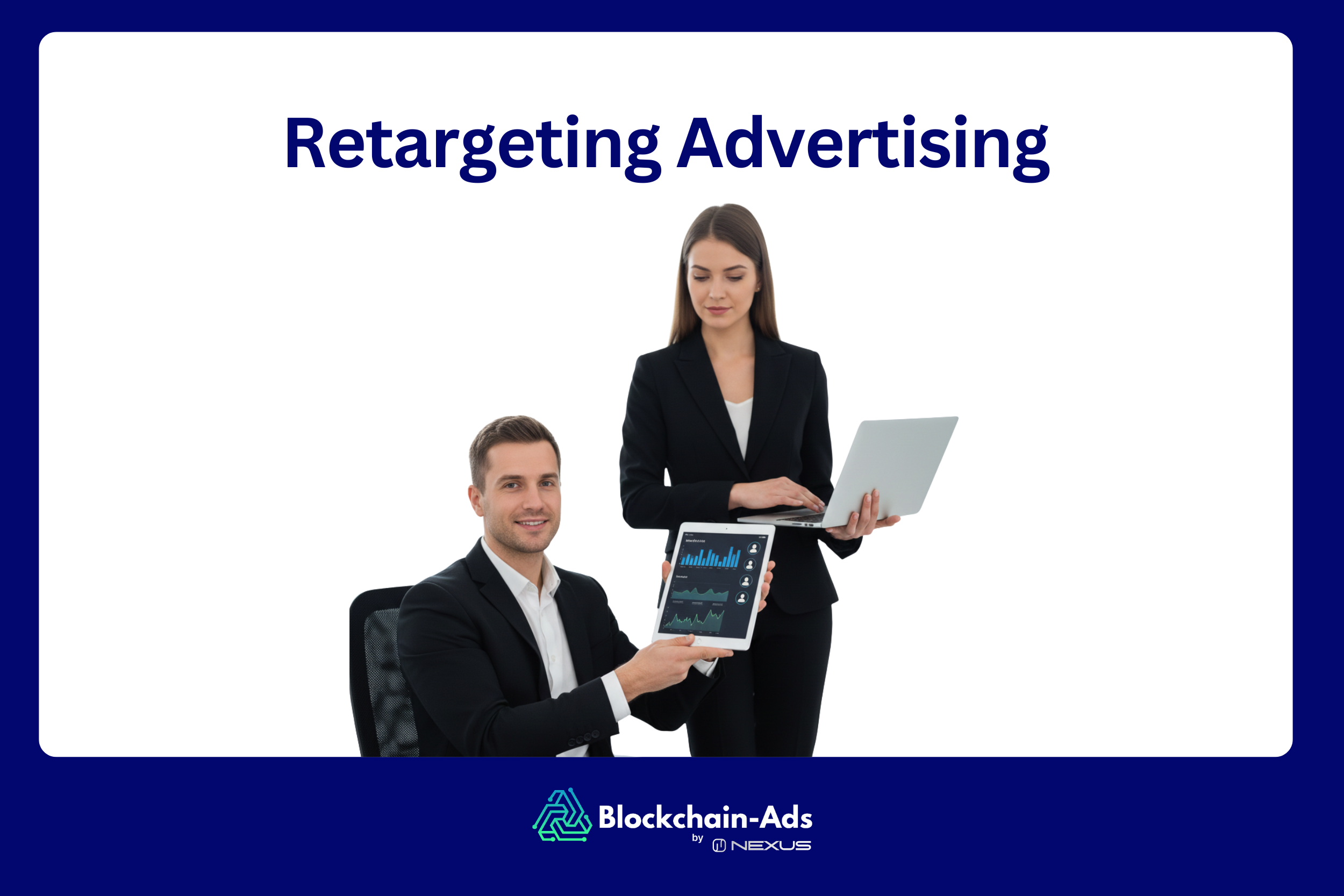
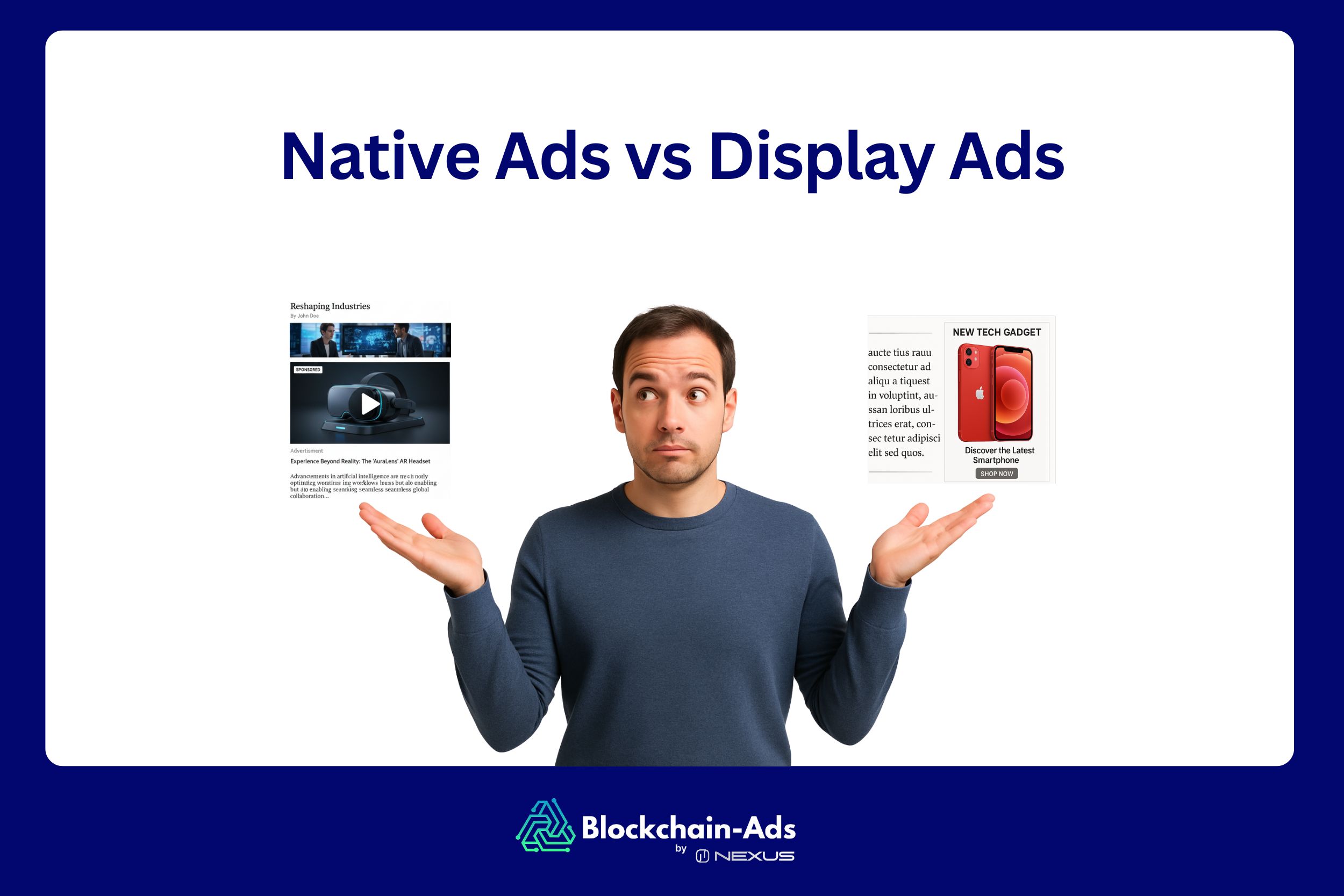
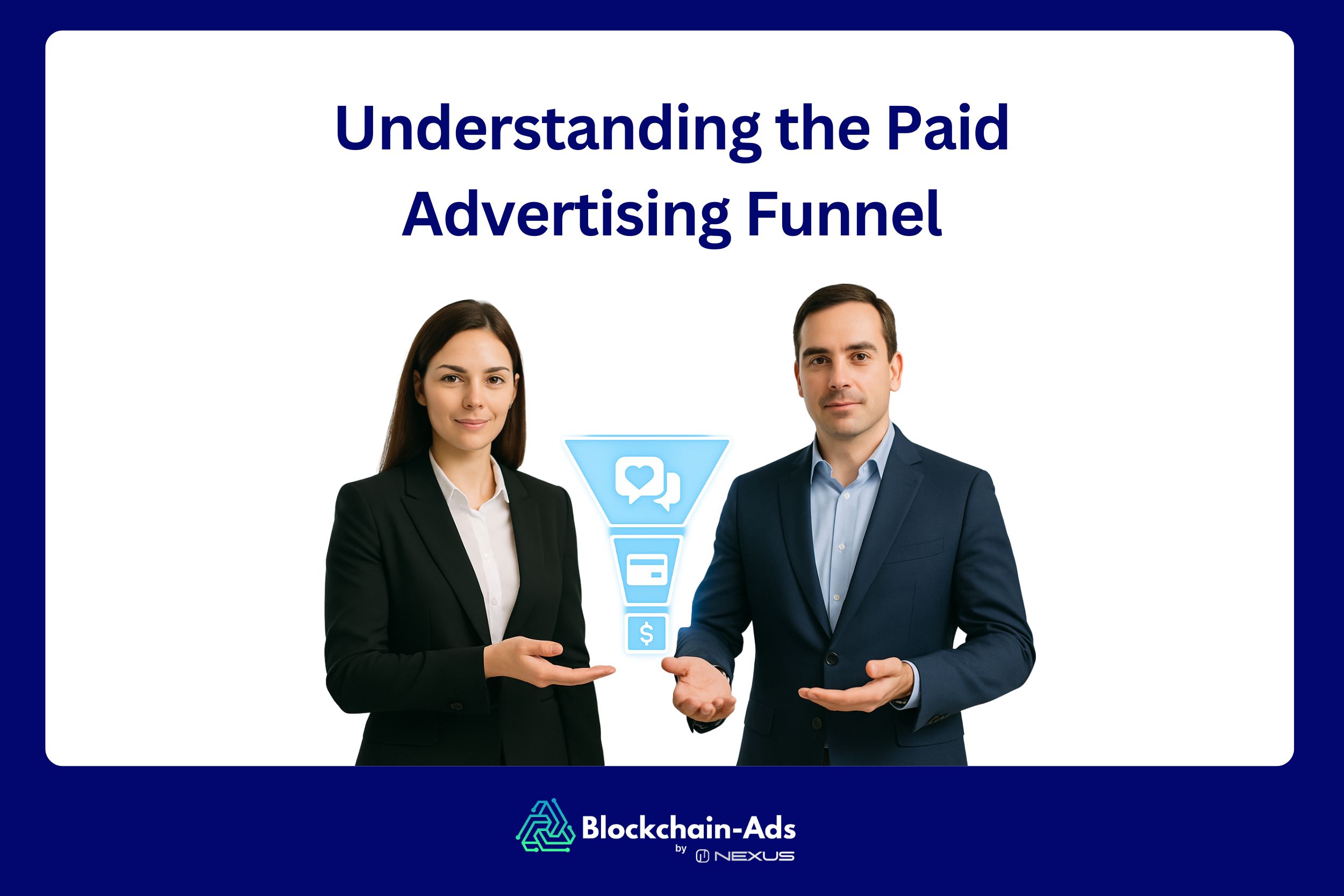
.png)
